Texas Heeler
Canis lupus
Though they are loyal to their family, these dogs can be shy around strangers.
Advertisement
Texas Heeler Scientific Classification
- Kingdom
- Animalia
- Phylum
- Chordata
- Class
- Mammalia
- Order
- Carnivora
- Family
- Canidae
- Genus
- Canis
- Scientific Name
- Canis lupus
Read our Complete Guide to Classification of Animals.
Texas Heeler Conservation Status
Texas Heeler Facts
- Fun Fact
- Though they are loyal to their family, these dogs can be shy around strangers.
- Temperament
- Intelligent and loyal
- Diet
- Omnivore
Texas Heeler as a Pet:
- General Health
- Energy Level
- Shedability
- Trainability
- Intelligence
- Tendency to Chew
- Size
- Family and kid friendliness
- Yappiness / Barking
- Low
- Separation Anxiety
- Moderate
- Preferred Temperature
- Warm climate
- Exercise Needs
- High
- Friendly With Other Dogs
- Moderate
- Pure bred cost to own
- $600
- Dog group
- Non-sporting
- Male weight
- 25-50 lbs
- Female weight
- 25-50 lbs
This post may contain affiliate links to our partners like Chewy, Amazon, and others. Purchasing through these helps us further the A-Z Animals mission to educate about the world's species.
View all of the Texas Heeler images!
Texas Heelers are happiest when working, so they make good service dogs.
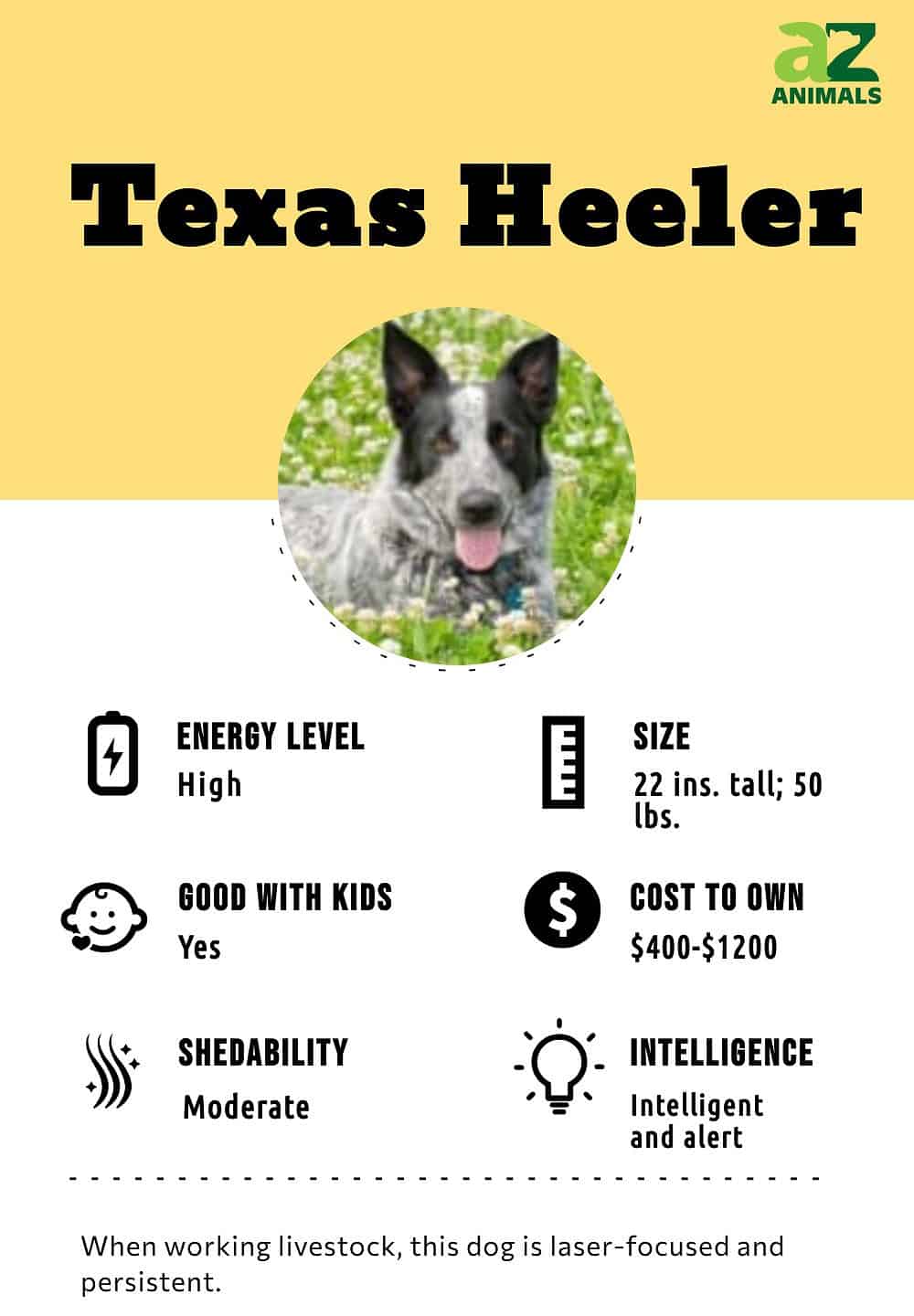
Breed an Australian Shepherd and an Australian cattle dog and you have a Texas Heeler. Although it’s uncertain when this crossbreed originated, breeders in Texas created this type of heeler, and it was first registered in 1970. Breeders were looking for a dog with the herding skills of its parents along with a loyal, friendly temperament. Its name is a nod to the Texans who came up with this designer breed.
See all of our expert product reviews.
Texas Heelers are intelligent dogs that are alert to whatever is happening around them. Although these dogs were bred for herding sheep and cattle, they also make good pets for active families with kids who love spending time outdoors. Don’t be fooled! The Texas Heeler isn’t as rowdy as its name would imply. They have an even temperament and sweet nature.
The 3 Different Types of Texas Heelers and Texas Heeler Mixes
- Mini Texas Heeler
- Standard Texas Heeler
- Labraheeler
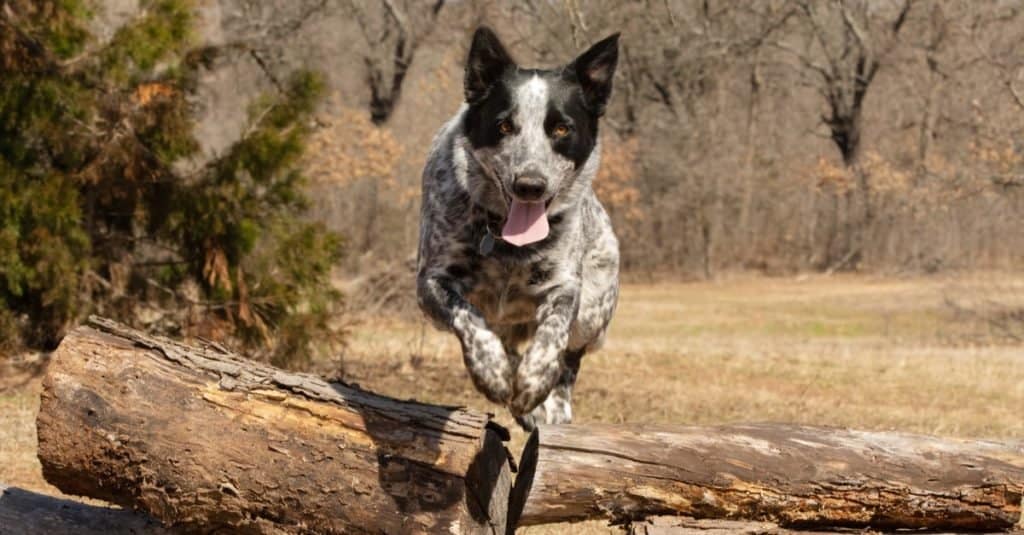
©Sari ONeal/Shutterstock.com
3 Pros and Cons of a Texas Heeler
| Pros! | Cons! |
|---|---|
| Easy grooming routine The grooming routine of this short-haired dog involves brushing them just once per week. | Need lots of exercise These herding dogs are energetic, so they need around 60 minutes of exercise each day. |
| A great watchdog Texas Heelers are alert, making them effective watchdogs. | The herding instinct Since these dogs were bred to herd livestock, they must be watched around other pets. Their instinct may tell them to herd other pets in the household! |
| A Long Lifespan These dogs have a lifespan of up to 15 years. | Not good for apartment dwellers These dogs need lots of space to move around so living in an apartment would not be suitable. |
Temperament and Behavior
There are two sides to the personality of a Texas Heeler. When it comes to the work of getting stray sheep or cattle back into the herd, this dog is laser-focused and persistent. Alternatively, when a Texas Heeler is at home with the adults and children in a family, it’s quiet and gentle.
One of the most valued traits of this dog is loyalty. These dogs are so dedicated to their family members they can become shy when unfamiliar people visit the home. These dogs are known for their alert behavior. They are experts at letting their family know when someone is at the door.
Size and Weight
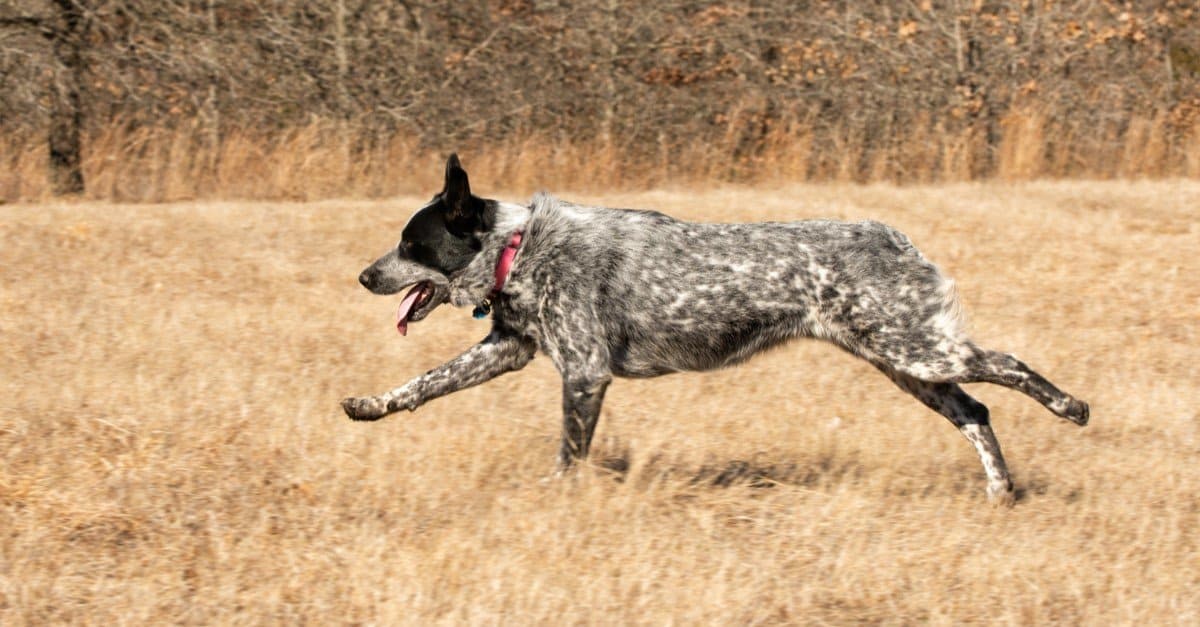
The Texas Heeler is a medium-sized dog weighing about 50 lbs.
Health and Entertainment for your Texas Heeler
See all of our expert product reviews.
©Sari ONeal/Shutterstock.com
Texas Heelers are medium sized dogs with a coat of short hair. Both male and females can grow to a height of 22 inches and can weigh up to 50 pounds, full grown. Texas Heeler puppies at 7 weeks old weigh about 9 pounds. These dogs are considered fully grown at 11 to 12 months.
| Height (Male) | 22 inches tall |
| Height (Female) | 22 inches tall |
| Weight (Male) | 50 pounds, full-grown |
| Weight (Female) | 50 pounds, full-grown |
Common Health Issues
Texas Heelers have some common health issues. One of those is hip dysplasia. Hip dysplasia occurs when the hip joint doesn’t fit together properly. Limping, hopping, and running in an awkward way are all symptoms of this condition. Surgery is needed in severe cases of hip dysplasia. Other treatments for less severe cases include physical therapy, supplements, and weight loss.
Another common health issue for Texas Heelers is distichia. Distichia is the growth of extra eyelashes at the edge of a dog’s eyes. This may seem like a small issue, but distichia can be painful. A veterinarian needs to treat this issue.
A third common health issue is cataracts. A dog with cataracts has cloudiness in one or both of its eyes. Surgery is needed for severe cataracts that interfere with a dog’s everyday life.
In summary, the most common health issues include:
- Hip dysplasia
- Distichia
- Cataracts
Care

To care properly for a Texas Heeler, it is best if the owner knows all about this hybrid dog.
©Sari ONeal/Shutterstock.com
Learning everything possible about the healthcare, dietary, grooming, and exercise needs of this dog can help an owner to take good care of their new pet. Whether a family purchases a Texas Heeler puppy or adopts an adult dog, it’s best to know all about this hybrid dog.
Best Dog Food
Texas Heeler puppies and adult dogs need different nutrients in their diet. Adding certain vitamins and ingredients to this dog’s diet can help to fend off some of its common health issues. Consider the diets of puppies and adult Texas Heelers:
Texas Heeler puppy food: Omega-3 fatty acids along with a supply of lean protein support healthy muscles and joints in this puppy. This is important for a canine that may develop hip dysplasia. Fat gives a puppy the energy it needs to run and explore every day. Calcium contributes to healthy bones, claws, and teeth. Though cataracts can’t be prevented, including Vitamin A in a Texas Heeler puppy’s diet can boost their eye health. Fiber is good for a puppy’s digestion.
Texas Heeler adult dog food: Chicken, fish, and other lean protein is essential in an adult Texas Heeler’s diet. They are energetic dogs that love to run, jump, and play so they need protein to support muscle, cartilage, and joint health. A limited amount of fat in an adult dog’s diet helps them to have the energy they need while not taking on extra weight. Vitamin C serves as an antioxidant. Vitamin A supports this dog’s eye health. Calcium keeps their teeth and bones strong and healthy.
Since the Texas Heeler’s shepherding background gives it herding instincts and loads of energy, it’s vital to feed it a dog food with robust nutrition to fuel the fun.
For balanced food packed with everything Texas Heelers need to stay healthy, one good choice is Blue Buffalo Wilderness High Protein Natural Adult Dry Dog Food.
This high-protein dog food contains glucosamine, phosphorous, and calcium for strong bones and joints, to help reduce Texas Heelers’ chances of hip dysplasia. With chicken as the first ingredient, the balance of quality protein and complex carbs supports these dogs’ active lifestyles. There’s also omegas for good skin and coat condition and Vitamin A and taurine for eye health.
Visit Chewy or Amazon and see if your Texas Heeler thrives on Blue Buffalo Wilderness High Protein Natural Adult Dog Food.
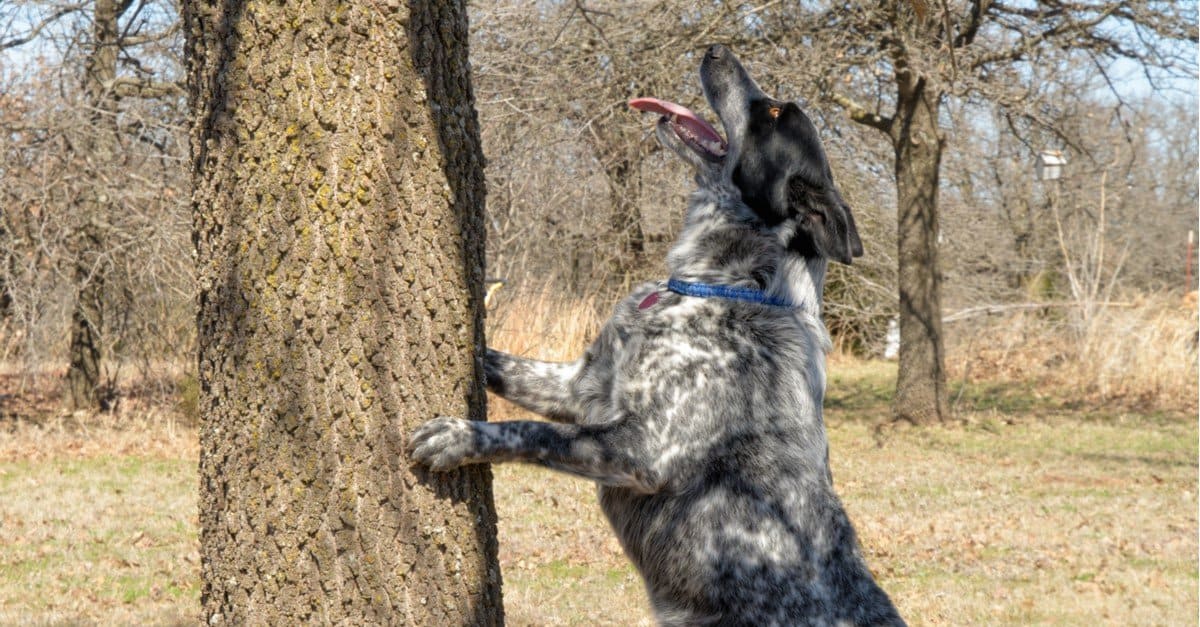
A Texas Heeler dog is intelligent and easy to train. Its grooming needs are moderate, allowing more time to play outside.
©Sari ONeal/Shutterstock.com
- A high-protein recipe crafted with real deboned chicken first to help build and maintain lean muscle mass.
- Features glucosamine, chondroitin and EPA to support your dog’s joint function and overall mobility.
- Contains omega-3 and -6 fatty acids to support healthy skin and a lustrous coat.
- LifeSource Bits provide a precise blend of antioxidants, vitamins and minerals selected by holistic veterinarians and animal nutritionists to support immune system health, life stage requirements and healthy oxidative balance.
- Made with natural ingredients and 100% free from chicken (or poultry) by-product meals, corn, wheat, soy, artificial flavors and preservatives.
Texas Heeler Maintenance and Grooming
How much does a Texas Heeler shed? These dogs shed a moderate amount of hair. Most of them have short or medium-length hair that requires brushing once per week.
A grooming glove is a great tool for brushing this dog’s coat. It removes loose, dead hair while smoothing down the unique mix of black, blue, red, chocolate, and white hair in its coat. A grooming glove also offers more control when gently brushing a dog’s tail, legs, and face. If a Texas Heeler has hair that’s medium in length, a rubber slicker brush can be useful in removing tangles, dirt, twigs, etc. while not pushing against the dog’s skin.
Training
Texas Heelers are intelligent canines, so they are known to be relatively easy to obedience train. It’s best to choose a training area with a minimal amount of distractions. Not surprisingly, the Blue Heeler is intelligent and easy to train as well.
Exercise
These herding dogs need at least 60 minutes of exercise each day. Remember, Texas Heelers were bred to be outdoors working on farms and ranches. But that doesn’t mean a family can’t enjoy this dog as a pet even if they don’t run a ranch. Taking this dog to the dog park, going out for a run in a nearby field or woods, or playing a game of fetch at the park are all ways to give this pooch some exercise.
Like Queensland Heelers, Texas Heelers are not suited for apartment life. They need a lot of space to move around so a home with a large backyard is ideal.
Puppies
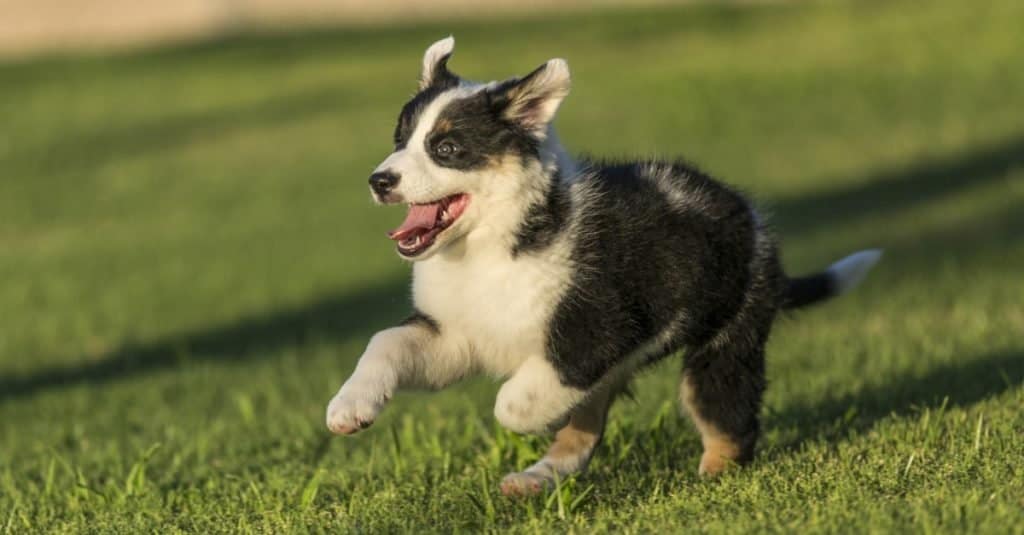
©Chris Curtis/Shutterstock.com
Texas Heeler puppies need exercise outdoors just like adult dogs do. Be sure to find a safe place for them to explore and stretch their legs until they receive obedience training.
Children
Socialized Texas Heelers are good with children. They have a gentle, affectionate nature. Kids who are active and like to run around are a perfect match for these energetic dogs.
Similar Dogs
Texas Heeler vs. Blue Heeler
The Texas Heeler and Blue Heeler share some similarities starting with the word Heeler in their names! Of course, there are some differences between these two canines as well.
One of the similarities between these two dogs is their height. Both the Texas Heeler and the Blue Heeler are between 17 inches and 22 inches tall. Also, both dogs are moderate shedders and require minimal grooming. Blue Heelers and Texas Heelers are intelligent and loyal.
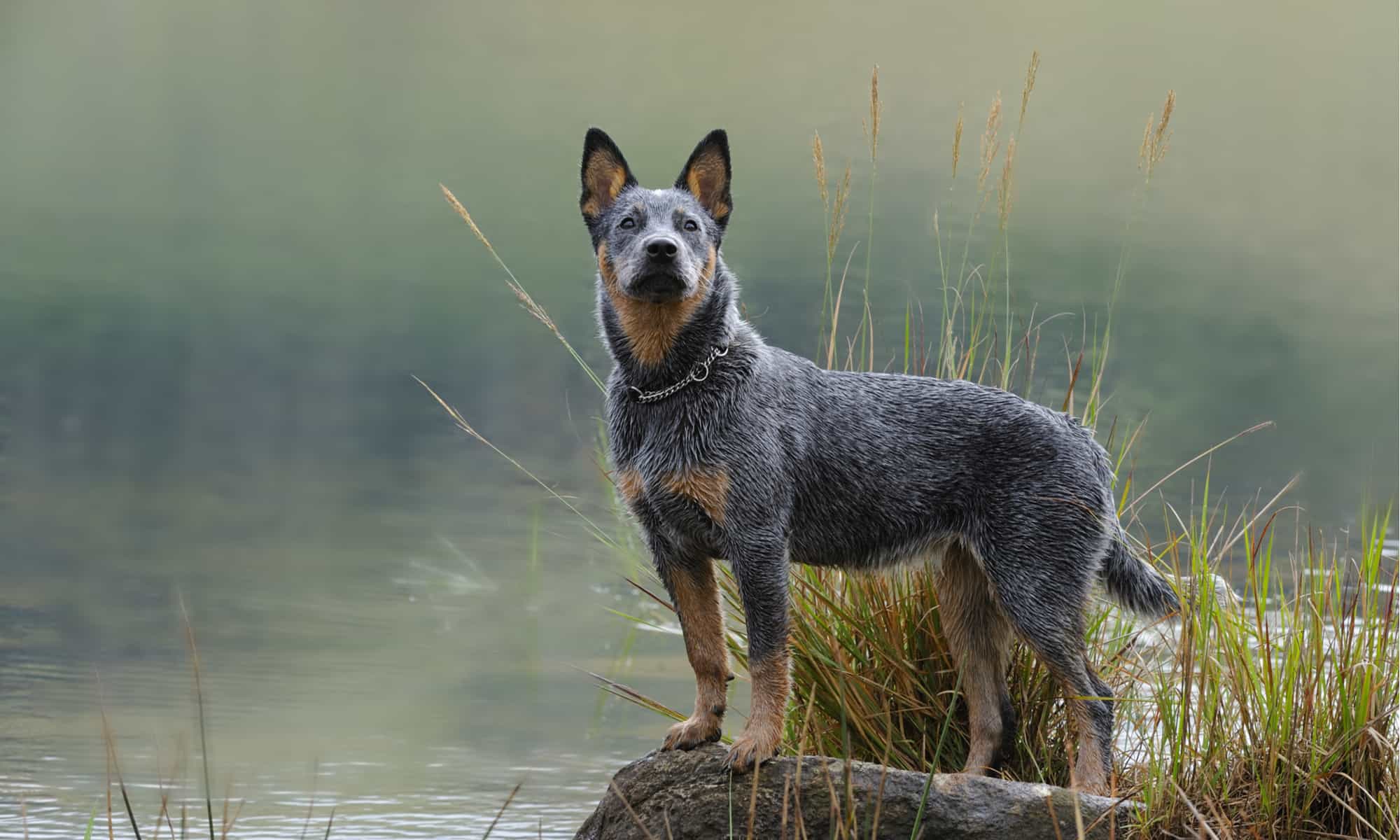
Australian cattle dog, aka Blue Heeler, which is a a pedigreed dog.
©WOLF AVNI/Shutterstock.com
There are variations of both Texas Heelers and Blue (or Queensland) Heelers. There is a Mini Texas Heeler that goes up to only 40 pounds as an adult. A Mini Texas Heeler is created by breeding a Border Collie or a Mini Australian Cattle dog with an Australian Shepherd. There are also Mini Blue Heelers. These are created by breeding two Blue Heelers that are naturally smaller in size.
A main difference between these two dogs is that the Blue Heeler is purebred while the Texas Heeler is a mix. Another difference is that the Blue Heelers weight more than Texas Heelers. Blue Heelers go by several names including Queensland Heeler, Australian Cattle dog, and Red Heeler. Texas Heelers are sometimes called Aussie Sheep Heelers and Texas Cattle dogs. A Blue Heeler’s coat can be red mottled or blue mottled whereas a Texas Heeler can be black, blue, chocolate, or white.
Other dogs similar to Texas Heelers are Border Collies, Old English Sheepdogs, and Swedish Vallhunds.
- Border Collie – Intelligence and an energetic nature are two big similarities between these two canines. However, Border Collies weigh less than Texas Heelers.
- Old English Sheepdog – This dog is very loyal just like the Texas Heeler and it makes a great watchdog. But Old English Sheepdogs weigh about ten pounds more than Texas Heelers.
- Swedish Vallhund – Both of these dogs are energetic and alert herding canines. They can both have black, white, or chocolate colored hair. However, the Vallhund is shorter and weighs less than the Texas Heeler.
Popular Names for Texas Heelers
Popular names for Texas Heelers include:
- Sam
- Boomer
- Sally
- Bandit
- Rosy
- Jack
- Luna
- Lucy
- Molly
Texas Heeler FAQs (Frequently Asked Questions)
What is a Texas Heeler?
A Texas Heeler is a dog that belongs to the hybrid group. It’s a mix between an Australian Cattle dog and an Australian Shepherd. There is also a smaller version of this hybrid called the Mini Texas Heeler. These dogs were bred for herding livestock, but they also make loyal and gentle family pets.
How much does it cost to own a Texas Heeler?
The cost of Texas Heeler puppies from a breeder is around $600. There are also rescue organizations that adopt out these dogs to families.
The yearly vet costs for a Texas Heeler range from $300 to $500.
The monthly food cost for this herding dog ranges from $34 to $45.
Is a Texas Heeler a good family dog?
Yes, a socialized Texas Heeler or Mini Texas Heeler is a good family dog.
Is a Texas Heeler good with kids?
Yes, these dogs are good with kids.
How long does a Texas Heeler live?
The lifespan of this canine goes up to 15 years.
Are Texas Heelers hard to train?
No. These dogs are smart and alert making them easy to train.
Are Texas Heelers destructive?
Not normally. However, a Texas Heeler that doesn’t receive enough daily exercise may start to chew and destroy items around the house.
What are the key differences between the Texas Heeler and Blue Heeler?
The largest difference between the Texas Heeler and Blue Heeler is that the Blue Heeler is purebred, while the Texas Heeler is a cross between the Australian Cattle Dog and Australian Shepherd. Other distinguishing traits include their size, appearance, temperament, trainability, barking level, and grooming frequency.
Thank you for reading! Have some feedback for us? Contact the AZ Animals editorial team.
Sources
- iHome Pet, Available here: https://ihomepet.com/mini-blue-heeler/
- Northwest Animal Eye Specialist, Available here: https://www.northwestanimaleye.com/distichiasis.pml
- American Kennel Club, Available here: https://www.akc.org/dog-breeds/swedish-vallhund/
- American Kennel Club, Available here: https://www.akc.org/dog-breeds/australian-cattle-dog/


















